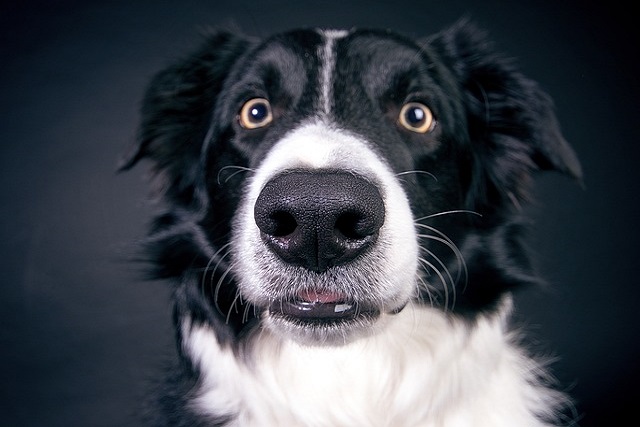
What is glaucoma in a dog?
You might notice your dog squinting more at mealtime or avoiding bright sunlight—these small changes could be early signs of a serious eye condition.
Picture your Poodle eyeing your salad—while some veggies are healthy, others pose serious risks. Let’s explore the science behind canine dietary restrictions with vet insights and real pet stories, blending safety facts with practical tips.
Grapes and raisins top the danger list. My neighbor’s Labrador, Max, suffered kidney failure after eating a handful of raisins. "Even small amounts can cause irreversible damage," her vet said. Studies show 1–2 grapes per pound of body weight are toxic.
Onions and garlic are silent threats. When I added diced onions to my Shepherd’s food, she developed anemia. "Allium plants contain thiosulphate, which damages red blood cells," a hematologist vet explains. Scallions and chives pose the same risk.
Avocados contain persin, harmful to dogs. A friend’s Pug, Bella, vomited after stealing avocado toast. "Persin causes stomach upset and breathing issues," my vet warns. Skip guacamole around your pup—even the skin and pit are dangerous.
Tomatoes in their raw form are problematic. Green tomatoes contain solanine, a toxin also found in potatoes. My rescue mutt, Charlie, drooled excessively after biting a green tomato. "Ripe red tomatoes are safer but should be fed in moderation," a nutritionist says.

Cherries hide toxic pits and stems. When Charlie swallowed a cherry pit, he needed emergency surgery. "Pits contain cyanide, and the stems block intestines," a surgeon vet notes. Remove all traces before serving any stone fruit.
Raw potatoes and their peels are risky. A client’s Bulldog, Winston, developed tremors after eating raw potato chips. "Raw potatoes have solanine; cooked ones are safer but high in carbs," my vet says. Avoid fries—oil and salt compound risks.
Citrus fruits like lemons and limes upset stomachs. Bella once licked lemon juice and vomited for hours. "Citric acid irritates the digestive tract," a dermatologist vet explains. Orange peels are especially hard to digest.
Unripe fruit poses extra dangers. Green bananas or unripe mangoes cause diarrhea. "Underripe fruits have higher starch and less sugar, hard to break down," a trainer notes. Stick to fully ripe, small portions.
Leafy greens like spinach and kale in excess. While small amounts are okay, daily spinach can cause calcium imbalances. "Oxalates in spinach bind to calcium, risking bladder stones," a geriatric vet warns. Rotate greens instead of repeating.
Local animal welfare laws apply. In the EU, feeding toxic foods violates animal care regulations; in California, neglecting dietary risks is illegal. "Knowing forbidden foods isn’t just kind—it’s a legal duty," a lawyer friend reminds me.
Signs of food toxicity: vomiting, diarrhea, lethargy. If your dog eats a forbidden food, call a vet immediately. Max’s raisin incident taught my neighbor: "Seconds matter in toxic emergencies."
Safe alternatives to risky produce. Carrots and blueberries make great treats—my Labradoodle loves frozen blueberries on hot days. "They’re packed with antioxidants and easy to digest," my nutritionist says.
Educating family members is key. When my niece fed Charlie grapes, she didn’t know the risk. "Post a forbidden foods list in the kitchen," a behaviorist suggests. Now my fridge has a visual reminder.
Every dog is unique—what upsets Bella may not affect Max. "Consult your vet before adding new foods, especially for breeds with sensitivities," my vet says. With knowledge and caution, you’ll keep your pup safe from sneaky produce risks.

You might notice your dog squinting more at mealtime or avoiding bright sunlight—these small changes could be early signs of a serious eye condition.

Let’s set the scene: It’s a sweltering Phoenix afternoon—105°F outside—and you rushed your 2-year-old Lab mix, Cooper, on a quick walk to “get it over with.”

Let’s get real: You’re in your Miami apartment, watching your 3-year-old Corgi, Loki, struggle to climb the stairs to your second-floor unit.

Many dog owners brush off occasional scratching as just “dog behavior,” but persistent itching often signals something more—like a food allergy.

You might first notice your dog scratching more than usual—chewing at their paws until the fur looks thin, or rubbing their face against the couch nonstop.

Let’s be real: You’re standing in your Chicago apartment, watching your 3-year-old Beagle, Max, huff and puff just to climb onto the couch.